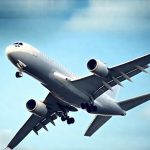The discomfort many experience during and after air travel isn’t always about cramped seats or jet lag. Often overlooked is the physiological stress placed on the body due to changes in cabin pressure – specifically, its impact on fluid balance and kidney function. This can lead to a noticeable shift in bodily fluids, resulting in what’s colloquially known as altitude-related urine shifts, manifesting as bloating, frequent urination, or even mild dehydration upon landing. While typically transient, these effects can be significantly mitigated with proactive hydration strategies tailored to the unique demands of air travel. Understanding how our bodies react at altitude and preparing accordingly is key to a more comfortable flying experience.
This phenomenon isn’t simply about drinking more water during the flight; it’s about smart hydration – strategically timing fluid intake, balancing electrolytes, and considering the type of fluids consumed. Cabin air has extremely low humidity, exacerbating dehydration even before takeoff. The pressure changes also influence kidney function, prompting increased urine production as the body attempts to maintain homeostasis. Failing to counteract these effects can lead to discomfort beyond just physical symptoms; it can subtly impact cognitive function and overall well-being during travel, especially for longer flights or those involving time zone changes.
Understanding Altitude-Related Fluid Shifts
The core issue stems from barometric pressure differences between the cabin environment and sea level. As an aircraft ascends, cabin pressure is maintained but remains lower than ground level – typically equivalent to around 5,000 to 8,000 feet altitude. This lower pressure triggers a cascade of physiological responses. Firstly, it causes gases in the body to expand (Henry’s Law), potentially leading to bloating and gastrointestinal discomfort. More critically, it affects kidney function. The kidneys respond to this perceived change as if you’ve moved to a higher altitude permanently, increasing production of dilute urine to compensate for potential oxygen deprivation (even though cabin air is generally breathable). This diuretic effect can quickly lead to dehydration if not actively countered.
Furthermore, the dry recirculated air in aircraft cabins accelerates water loss through respiration and skin evaporation. The combination of increased urine output and accelerated fluid loss creates a significant hydration challenge. It’s important to note that simply feeling hydrated isn’t always accurate; by the time you feel thirsty, you are already mildly dehydrated. This is why proactive pre-flight preparation and consistent in-flight hydration strategies are crucial. Ignoring these factors can result in noticeable symptoms like headaches, fatigue, and impaired cognitive function – all impacting your travel experience. You might want to review how to prevent errors in urine collection to better understand fluid dynamics.
The physiological impact isn’t uniform across individuals. Factors such as age, underlying health conditions (especially kidney or heart problems), and pre-existing hydration levels play a role. Frequent flyers are also more susceptible to these effects over time due to the cumulative stress placed on their bodies. Recognizing this individual variability is vital when developing a personalized hydration plan for air travel. Understanding sustainable hydration tracking methods can help you stay consistent.
Smart Hydration Strategies: Before, During, and After Flight
The ideal approach isn’t just about chugging water on the plane; it’s a three-pronged strategy encompassing pre-flight preparation, in-flight maintenance, and post-flight rehydration. Begin at least 24 hours before your flight by consciously increasing your fluid intake – aiming for consistent sipping throughout the day rather than large volumes at once. Focus on water as your primary source of hydration, but also incorporate electrolyte-rich beverages like coconut water or diluted sports drinks (low in sugar) to replenish minerals lost through respiration and potential diuretic effects.
During the flight, maintain a steady rhythm of fluid intake. A good rule of thumb is about 8 ounces of water every hour, although this may vary based on individual needs and flight duration. Avoid excessive caffeine and alcohol as these are diuretics, exacerbating dehydration. Consider alternating water with herbal teas or diluted fruit juices (again, low in sugar). Finally, upon landing, continue to prioritize hydration for several hours – especially if you’ve experienced significant time zone changes. Replenishing electrolytes at this stage is also beneficial, particularly after long-haul flights. Staying ahead of these issues can also help with smart voiding prep if you have travel plans.
It’s important to be mindful of the type of water consumed during flight. While airlines typically provide bottled water, its quality can vary. If you are concerned about purity or taste, consider bringing your own filtered water bottle and filling it after passing through security. Also, remember that hydration isn’t solely about drinking fluids; consuming water-rich foods like fruits and vegetables (cucumber slices, watermelon) can contribute to overall fluid balance.
Optimizing Pre-Flight Hydration
- Start 24 Hours Before: Don’t wait until the airport to begin hydrating. Begin consistent sipping of water throughout the day preceding your flight.
- Electrolyte Balance: Incorporate electrolyte-rich beverages or foods – coconut water, bananas, diluted sports drinks (low sugar) are good options. This helps counteract mineral loss due to increased urine production.
- Avoid Diuretics: Limit caffeine and alcohol intake in the 24 hours leading up to your flight as they promote fluid loss.
In-Flight Hydration Maintenance
- Regular Sipping: Aim for approximately 8 ounces of water every hour during the flight, adjusting based on individual needs and flight duration.
- Avoid Sugary Drinks: Minimize consumption of sugary sodas and juices which can contribute to dehydration and energy crashes.
- Consider Herbal Teas: Opt for caffeine-free herbal teas as a hydrating alternative to coffee or tea.
Post-Flight Rehydration & Recovery
- Continued Hydration: Maintain consistent fluid intake for several hours after landing, especially if experiencing jet lag.
- Electrolyte Replenishment: Continue replenishing electrolytes through beverages like coconut water or electrolyte tablets/powders.
- Listen to Your Body: Pay attention to signs of dehydration (headache, fatigue) and adjust your hydration strategy accordingly. Recognizing small flow shifts can help you stay proactive about your health.
The information provided here is for general knowledge and informational purposes only, and does not constitute medical advice. It is essential to consult with a qualified healthcare professional for any health concerns or before making any decisions related to your health or treatment.





















